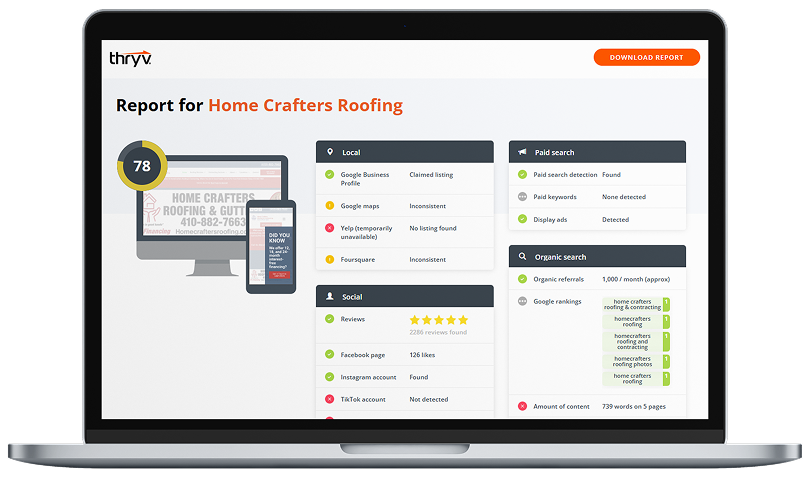Let’s think back to a couple years ago. Online shopping was gaining traction, so the frequency with which you searched for products online was probably getting pretty high too. You probably, pretty regularly, began visiting sites like Google or Amazon and typing in whatever product you were looking for. But here’s where things got weird. Whether you bought or not, that same product would show up on a completely different page you visited minutes or even hours later.
Pretty creepy right? But as this happened more and more, you got used to it—what marketers call ad retargeting.
How Retargeting Works
Retargeting uses code and cookies to track users’ behavior online. It can follow people from site to site, then recommending ads that fit their browsing behavior.
Ad retargeting really works. That’s because it allows you to invest your advertising dollars on only people who’ve already expressed explicit interest in what you’re selling. No more shotgun marketing. No more untargeted mass blasts.
It really, really works on social media. Advertisers are using this retargeting technique to place ads not only across a variety of social media channels, but right in the middle of consumers’ feeds. By doing so, ads seem not only hyper-targeted, they seem almost like recommendations from friends.
But even once you know how powerful ad retargeting can be, knowing where to start can be intimidating. Check out these top social ad retargeting tips from the experts.
Social Ad Retargeting DOs and DON’Ts
Don’t default to Facebook.
Facebook is still, by far, the most popular social media site. And while that means businesses have an opportunity to reach the largest audience (around 2 billion people to be exact), it also means doing so will cost you.
Since Facebook clicks are so costly, explore alternative sites that offer ad retargeting.
Do use a frequency cap.
With the sheer volume of ads consumers are exposed to on a daily basis, it might be tempting to set your retargeted ads to appear at a really high frequency to cut through the clutter.
This approach might make sense for other forms of advertising, when your goal is to gain brand awareness and recognition. But when your target audience has already expressed interest in your brand, too high of a frequency of exposure could really turn them off.
Test a few ad variants with different frequency caps, and see which resonate and perform best.
Don’t be a hack.
When display advertising first arrived on the scene, we saw marketers try anything and everything to get their ads to stand out. Consumers were quickly inundated with, and annoyed by things like large pop-ups, flashing ads, countdown tickers, and clickbait.
Don’t be that marketer. Avoid the temptation to do something hacky with your social ad retargeting. While hacky ads sometimes get more clicks, those clicks usually represent consumers who are trying to get your ad to go away.
Keep your ads honest, simple, and true to your brand. Consumers will thank you.
Do keep their purchase window in mind.
If you sell a product people buy frequently, you make different advertising decisions from someone who sells something consumers buy infrequently.
Let’s use shampoo as an example. Most people purchase shampoo pretty frequently. So even if your targeted ad didn’t convert the first or even the second time, a consumer may convert the next time they buy shampoo. Because of this shorter, more frequent, purchase cycle, you’re probably safe targeting these consumers for a longer period of time.
Someone buying a hot tub, on the other hand, has a very different purchase window. Though they may take longer to decide on which hot tub model to buy, chances are that once they convert and buy, they won’t be looking for another hot tub anytime soon. So your purchase window for this type of product would be a lot shorter than others.
(Don’t confuse this with “purchase cycle,” the total length of time someone takes to make a purchase, which is typically much longer on high-dollar items like hot tubs.)
Don’t always go straight for the sale.
Retargeting ads shouldn’t always be about a quick win or immediate sale. You can also use ad retargeting to encourage and promote brand awareness.
Remember the purchase window? Not every consumer will act immediately, especially if you’re advertising higher-dollar products. So consider using your ads to build trust and recognition, so consumers keep you in mind once they are ready to buy.
Or, take a tip from content marketers, and use your ads to provide value. Instead of using your call to action button to link to a Book Now or Buy Now page, link instead to an informative blog post, or encourage consumers to follow your social media accounts.
Worried your social media accounts aren’t providing enough value? There are tools out there that will create content for you and schedule posts in advance, so you don’t have to worry about it. Thryv Plus includes a content library of more than 525,000 social posts.
Do use videos and slideshows.
Static ads can look really nice if done well, but people’s eyes are attracted to things that move or images they can interact with. So if you have the talent, or the budget, invest some time and money into video and slideshow ads.
Remember, Facebook reviews and approves all ad copy and creative before it lets it go live. And Facebook is loving video. And Facebook is really loving video that has captions, since videos automatically play without sound in the News Feed.
Pro tip: Keep your videos short. The longer the video goes outside 30 seconds, the more engagement drops.







